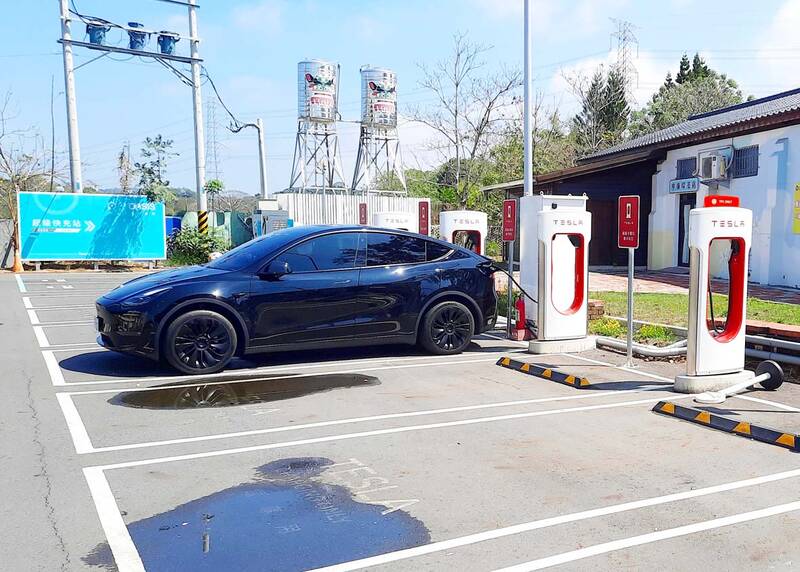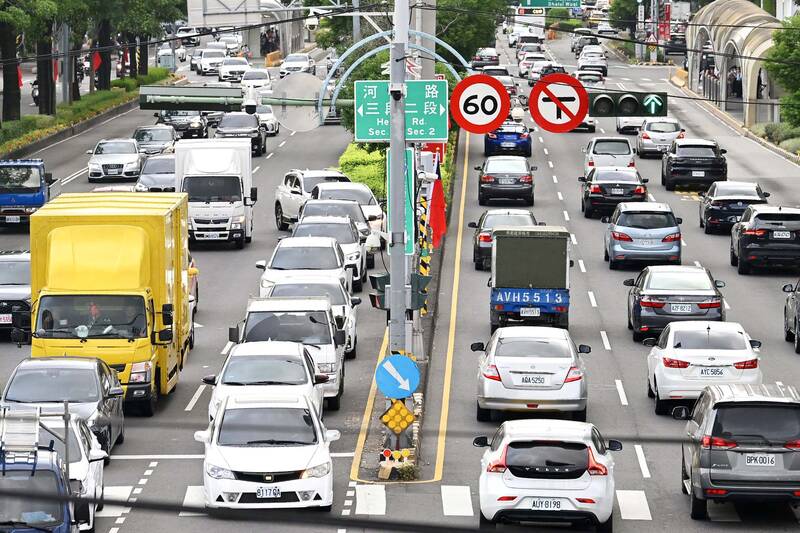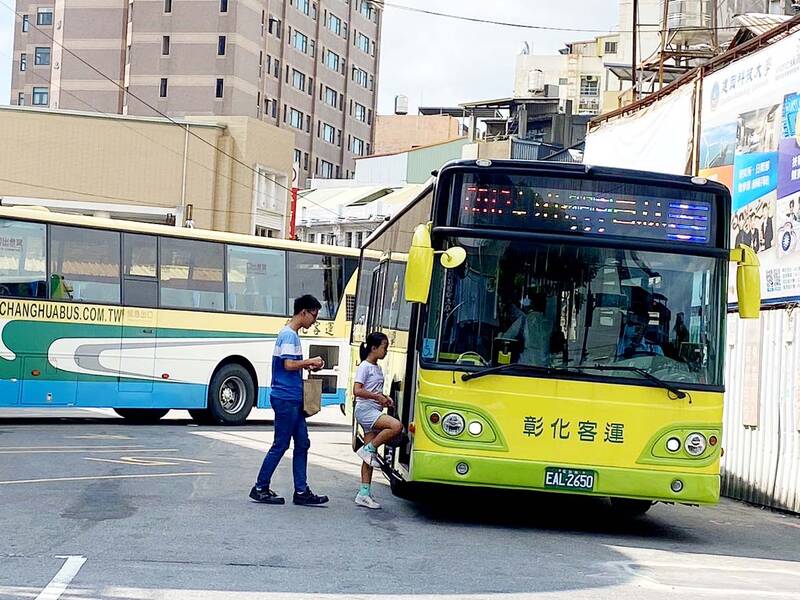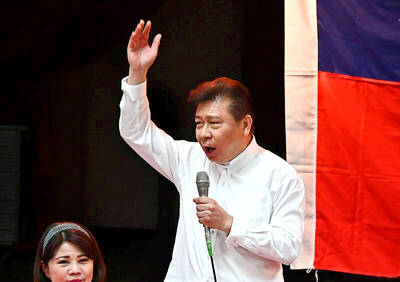When the Ministry of the Environment announced on Oct. 9 that subsidies currently offered to Taiwanese who replace petroleum-burning cars or motorcycles with electric vehicles (EVs) would be extended to the end of 2026, some asked if this money would be better spent in other ways.
Between February 2017 and October 2021, commodity-tax exemptions for EV purchases cost the central government NT$5.85 billion. To boost EV infrastructure in less populated areas, the ministry provides an installment subsidy of between NT$200,000 and NT$300,000 for each station outside the six special municipalities. The ministry also offers a subsidy of up to NT$1.6 million per vehicle to buyers of electric buses.
Several local governments also encourage residents to switch to EVs. All electric cars and motorcycles in Taipei are exempt from vehicle license tax until at least the end of next year. On May 15, the Keelung City Government clarified that its electric scooter program will cost around NT$2.75 billion over the next four years.

Photo: Steven Crook
EVs are undoubtedly becoming more popular. In 2018, electric cars accounted for just 2.2 percent of new registrations. Of the 36,532 cars delivered to customers last month, 11.6 percent were electric.
But if we’re ever to achieve net zero, we need to get people out of their cars altogether. To that end, the government needs to do a lot more to enhance public transportation systems, encourage cycling and make cities more walkable.
Those who say EVs won’t make much of a difference when it comes to slowing climate change often point out that manufacturing millions of batteries means extracting vast amounts of lithium and other minerals. Furthermore, for the next decade or two, charging those batteries will require burning fossil fuels.

Photo: Liao Yao-tung, Liberty Times
And while it’s true that EVs don’t produce tailpipe emissions, they may actually be worse than vehicles that burn gasoline or diesel when it comes to a different type of environmental damage.
TIRE DUST
Every time a car or motorcycle accelerates, turns or brakes, its tires shed ultrafine particles. The larger and heavier the vehicle, the more such dust it produces. By some calculations, a London bus adds 336g of tire dust to the roadside environment each day — yet so few people are aware of the issue that it’s been called a “stealth pollutant.”

Photo: Chang Tsung-chiu, Taipei Times
According to Breaking the Plastic Wave: A Comprehensive Assessment of Pathways Towards Stopping Ocean Plastic Pollution, a 2020 report compiled by the Pew Charitable Trusts, 78 percent of the microplastic particles that end up in the sea are tire flakes. (In terms of total volume, large items such as plastic bags and bottles are a much bigger problem.)
A recent study by researchers based at the University of Exeter and the University of Plymouth in the UK concluded that plastic microparticles released from common road tires should be treated as a “high concern” pollutant, because they “exert a complex toxic pressure” on living organisms.
To determine the toxicity of such particles and of leachates created by passing water through tire dust, the researchers looked at the effect on water fleas (Daphnia magna). According to a Jan. 29 University of Exeter press release, they discovered that these pollutants “showed a distinct effect on both the reproduction and development” of these small planktonic crustaceans, which also “displayed visible particle uptake within their digestive tract.”
What’s more, rubber particles from tires appeared to be more toxic to water fleas than polyethylene (PE) microplastics.
To ensure the results weren’t influenced by contaminated road surfaces, the researchers used particles taken from pristine tires. Even so, testing detected 54 organic chemicals in all five of the tire brands examined, “with a significant number of those chemicals classified as very toxic.”
The study — published in the Journal of Hazardous Materials — points out that tire-tread fragments from roads “are a major environmental pollutant, with a significant proportion being washed away into waterways near traffic networks. It is estimated that around 18 percent of these particles eventually reach freshwater, while 2 percent reach estuaries.”
It seems that nobody in Taiwan has studied the issue of tire dust. However, research by a team from National Taiwan University and National Yang Ming Chiao Tung University suggests there’s another pollutant that should inspire efforts to reduce the amount of traffic on local roads.
On Oct. 13, 2022, the Chinese-language United Daily News reported that the team had measured and analyzed suspended particles along Taipei’s Keelung Road (基隆路). In addition to exhaust emissions, they detected metal particles which they theorized were in the air as a result of brake pads rubbing against brake discs each time a road user had to slow down.
Expressing concern that high concentrations of metal particles could be harmful to humans, the lead researcher told the newspaper that the exact composition of polluted air along major roads deserves further investigation.
HEAVYWEIGHT VEHICLES
The heftier the vehicle, the greater the tire abrasion — and EVs weigh a good bit more than their gasoline-powered counterparts.
Including batteries, a Gogoro scooter is approximately 12 percent heavier than a 125cc Kymco two-wheeler with a full tank of gas.
On April 8 last year, British newspaper The Telegraph warned that multistory parking facilities “could be at risk of collapse as heavier electric vehicles put pressure on aging infrastructure.”
As vehicles get heavier, road surfaces break up more quickly. In late 2022, the US city of Indianapolis began ripping up and redoing stretches of pavement laid less than three years previously. The city’s public transit agency said that the weight of 18m-long electric buses running the same routes all day every day had caused much more wear and tear than expected.
Electric-vehicle cheerleaders say the next generation of EVs will be lighter, because technological advances are gradually improving the energy density of batteries. Yet buyers might prefer being able to go further on a single charge to owning a car that weighs a bit less.
In the case of electric city buses, there’s an obvious way to cut weight and thus reduce road wear and tire abrasion: Instead of deploying vehicles that carry batteries, Taiwan’s urban areas could emulate Athens, Milan and other cities, and set up trolley-bus networks. Trolley-bus infrastructure is far cheaper to build than metro lines or light rail systems. And because they don’t need to haul batteries and are thus lighter, trolley buses use less energy than electric buses per passenger kilometer. But they still generate tire dust.
Scientists say it may be possible to adjust tire chemistry so as to reduce toxicity. In the meantime, innovators are trying to perfect technology that can capture rubber fragments before they’re blown to the four winds.
The London-based Tyre Collective has been trialing a device that collects ultrafine particles by attracting them to electrostatically charged copper plates. According to their Web site, the particulates they capture “can be upcycled into industrial and consumer applications such as bitumen, shoe soles and soundproofing.”
There’s another way to reduce tire dust and brake metal particulate pollution from vehicles, as well as carbon emissions.
Stipulating that each household can use their car for up to 5,000km per year, but that every additional kilometer will incur a special tax, would encourage people to explore alternative forms of transportation. Each year, the threshold could be lowered. Back in 2008, the government did something similar with the electricity tariff, hiking the price while telling families that, if they consumed less power than in the previous year, they’d be charged the old per-kWh rate.
If such a scheme is to be politically acceptable, there’ll need to be concessions to those living in remote areas. It’s quite possible, however, that few voters would argue that residents of Nantou County’s mountainous Sinyi Township (信義) deserve a much more generous tax-free driving allowance than people living in central Taipei.
Steven Crook, the author or co-author of four books about Taiwan, has been following environmental issues since he arrived in the country in 1991. He drives a hybrid and carries his own chopsticks. The views expressed here are his own.

March 10 to March 16 Although it failed to become popular, March of the Black Cats (烏貓進行曲) was the first Taiwanese record to have “pop song” printed on the label. Released in March 1929 under Eagle Records, a subsidiary of the Japanese-owned Columbia Records, the Hoklo (commonly known as Taiwanese) lyrics followed the traditional seven characters per verse of Taiwanese opera, but the instrumentation was Western, performed by Eagle’s in-house orchestra. The singer was entertainer Chiu-chan (秋蟾). In fact, a cover of a Xiamen folk song by Chiu-chan released around the same time, Plum Widow Missing Her Husband (雪梅思君), enjoyed more

Last week Elbridge Colby, US President Donald Trump’s nominee for under secretary of defense for policy, a key advisory position, said in his Senate confirmation hearing that Taiwan defense spending should be 10 percent of GDP “at least something in that ballpark, really focused on their defense.” He added: “So we need to properly incentivize them.” Much commentary focused on the 10 percent figure, and rightly so. Colby is not wrong in one respect — Taiwan does need to spend more. But the steady escalation in the proportion of GDP from 3 percent to 5 percent to 10 percent that advocates

From insomniacs to party-goers, doting couples, tired paramedics and Johannesburg’s golden youth, The Pantry, a petrol station doubling as a gourmet deli, has become unmissable on the nightlife scene of South Africa’s biggest city. Open 24 hours a day, the establishment which opened three years ago is a haven for revelers looking for a midnight snack to sober up after the bars and nightclubs close at 2am or 5am. “Believe me, we see it all here,” sighs a cashier. Before the curtains open on Johannesburg’s infamous party scene, the evening gets off to a gentle start. On a Friday at around 6pm,

A series of dramatic news items dropped last month that shed light on Chinese Communist Party (CCP) attitudes towards three candidates for last year’s presidential election: Taiwan People’s Party (TPP) founder Ko Wen-je (柯文哲), Terry Gou (郭台銘), founder of Hon Hai Precision Industry Co (鴻海精密), also known as Foxconn Technology Group (富士康科技集團), and New Taipei City Mayor Hou You-yi (侯友宜) of the Chinese Nationalist Party (KMT). It also revealed deep blue support for Ko and Gou from inside the KMT, how they interacted with the CCP and alleged election interference involving NT$100 million (US$3.05 million) or more raised by the